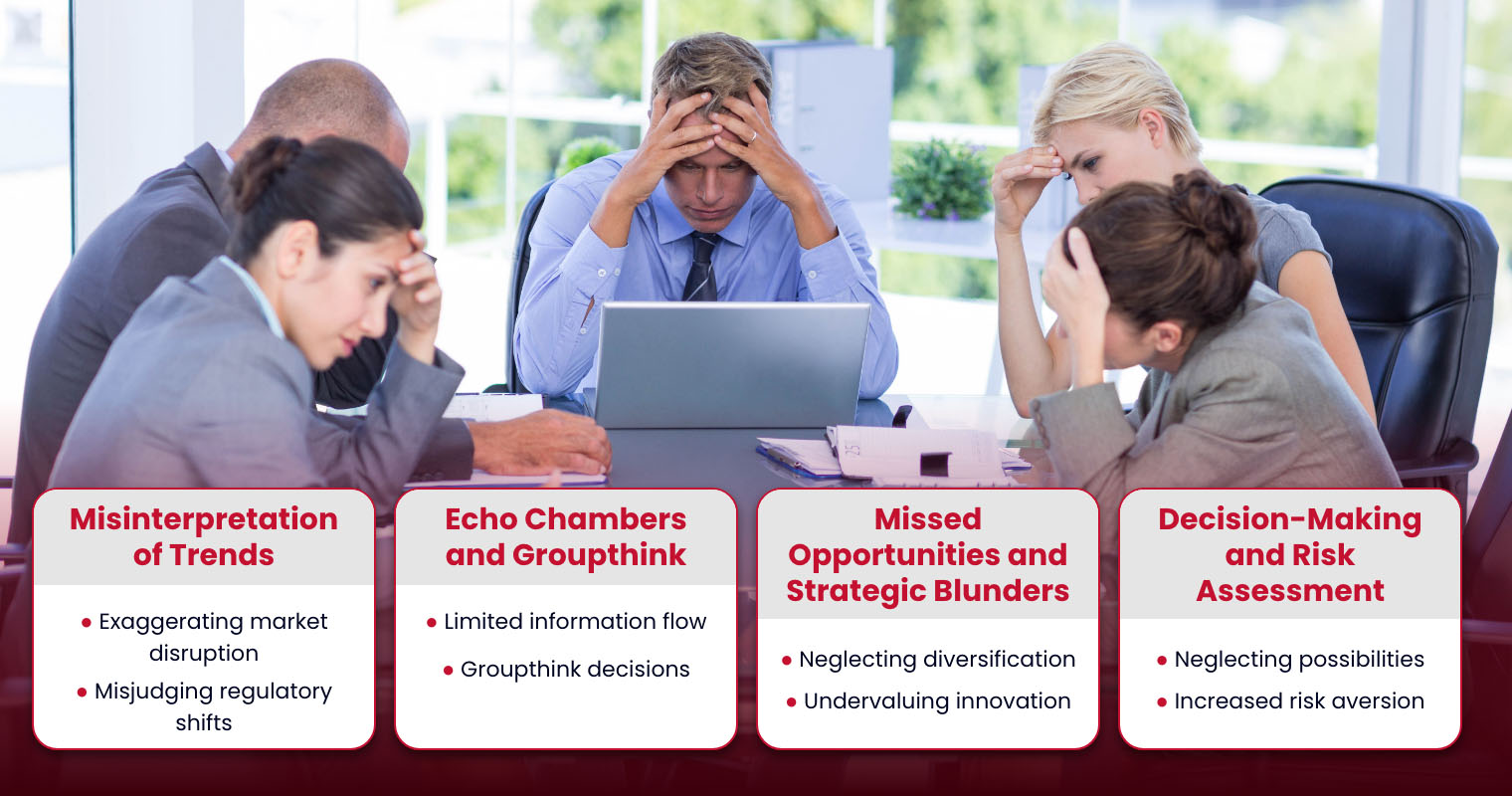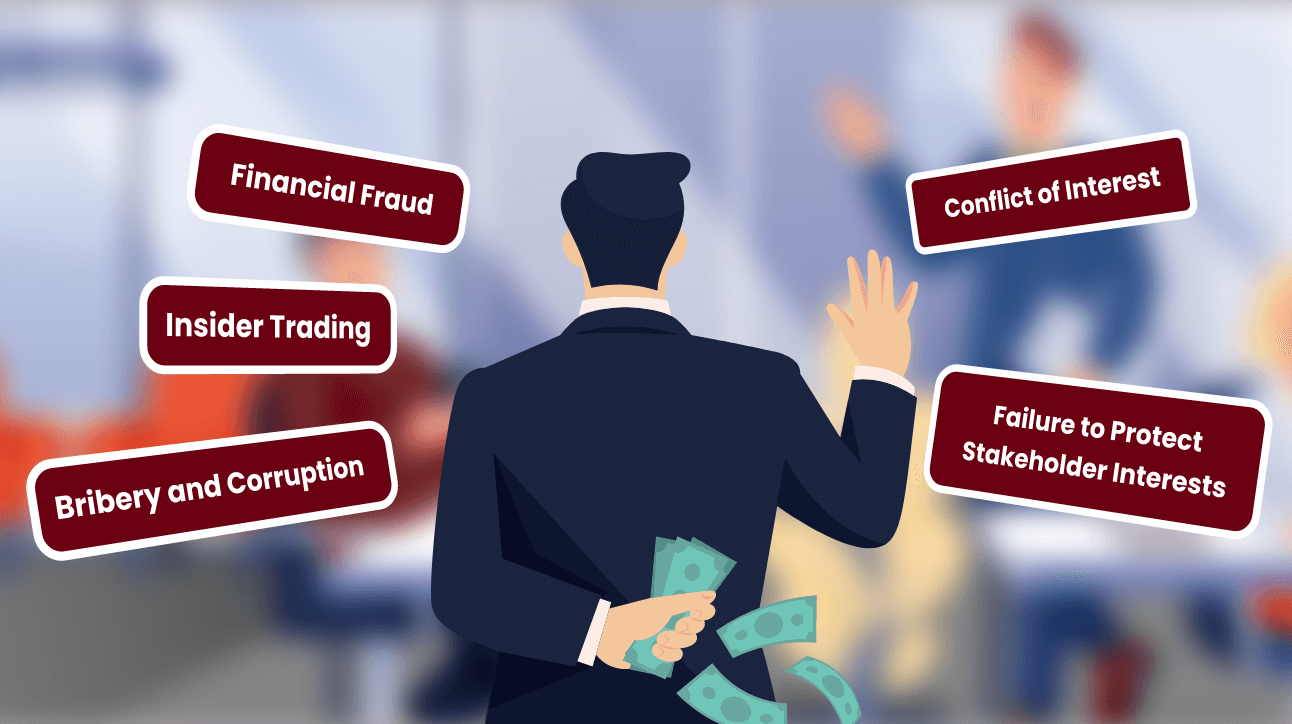Every boardroom holds eminent power in shaping their organizations’ success. And having such great responsibility requires them to make sound strategic decisions at all times. However, boards usually face challenges in human cognition that result in them having skewed perceptions and biases.
An example is the tendency of board members to overemphasize emerging trends or certain experiences. But what can cause such an occurrence? One known influence is the Baader-Meinhof Phenomenon, which can warp one’s perception and decision-making.
In this guide, we will delve into the impact of this bias on the board, ways to mitigate it, and some Baader-Meinhof Phenomenon examples.
What is the Baader-Meinhof Phenomenon?
The Baader-Meinhof Phenomenon (BMP), also known as the frequency illusion, refers to the experience of being exposed to something new and having a false impression that it appears more frequently. While there is no increase in occurrence, in reality, someone influenced by this phenomenon will have an increase in awareness. In short, it is a phenomenon where you notice things more.
This type of cognitive bias exhibits how the filtering system of the brain creates a skewed perception of frequency. The brain decides which things you should give attention to and which may be ignored. Therefore, once it’s primed to process and notice new information (the stimuli) — typically unconscious — can influence the subsequent response, including thoughts, behaviors, and feelings.
How Does Baader-Meinhof Phenomenon Happen?
According to Standford University’s linguist Arnold Zwicky, the Baader Meinhof effect is caused or reinforced by two mechanisms: selective attention and confirmation bias.
Selective Attention
One mechanism of frequency illusions and other biases is selective attention. This process involves focusing awareness on a particular information while dismissing irrelevant stimuli or distractions. It acts as a gatekeeper that filters out insignificant details even when being exposed to the constant bombardment of sensory information.
Selective attention and Baader Meinhof frequency illusion have a cause-and-effect loop. When the brain concentrates on a certain object or information, a frequency bias is likely to be triggered. This then creates the perception that the “chosen” element is appearing everywhere. To put it simply, selective attention is when you focus on something, while frequency bias amplifies the perceived occurrence of that thing.
Confirmation Bias
Another mechanism of frequency illusion is confirmation bias, in which the brain tends to select the information that fits one’s existing biases or ideas. This influences how people collect, recall, and interpret information. This process, however, can also cause people to discredit any idea that does not align with their preconceived beliefs.
While frequency biases when you see something everywhere, confirmation bias strengthens this phenomenon by reinforcing the information with existing ideas rather than challenging them. In other words, frequency bias creates the initial perception, while confirmation bias leads people to focus on additional instances of that event, even if they occur at the same rate as before.
Experiencing the Baader-Meinhof Phenomenon in the Boardroom
Have you ever taken on a new role or joined a new project, and suddenly, everything seems to be connected to it? This might be an example of a cognitive phenomenon—Baader-Meinhof, often preceded and reinforced by two biases: selective attention and confirmation bias.
Imagine you recently joined a board actively exploring potential M&A opportunities. Then every conversation, every news seems to focus on deals and acquisitions. While you might think the industry is experiencing an M&A surge, such perception could be an intricate interplay of cognitive biases.
Selective Attention: Entering a new environment naturally shifts your focus to information relevant to your current role. In an M&A scenario, your board involvement can draw your attention to similar discussions and news, filtering out unrelated topics.
Confirmation Bias: Next is when confirmation bias takes hold. You start to actively seek out and readily recall information confirming your current focus. You subconsciously reinforce the belief that the industry is having a deal frenzy.
This, however, might not be a true reflection of the industry’s overall activity. This is where the Baader-Meinhof Phenomenon comes in. Due to the combined influence of these two biases, you perceive coincidental encounters with M&A news as evidence of a bigger trend. Ultimately, leading to a distorted view of reality.
For such reason, it’s important to be aware of cognitive biases, particularly in critical decision-making environments like the board room. That way, you can avoid basing decisions solely on perceived trends that may be amplified by biased interpretations.
The Impacts of the Baader-Meinhof Phenomenon in the Boardroom

The boardroom, which is a bastion of critical thinking, is not immune to the influences of the Baader-Meinhof effect. This cognitive bias can have significant consequences for strategic choices. Find out below how BMP manifests in the boardroom.
Misinterpretation of Trends
A boardroom is a place where decisions are made based on foresight and analysis, BMP can cause misinterpretations. Generally, board members may start seeing nonexistent patterns or overemphasize the significance of recent, isolated incidents due to their recent occurrence. This strengthens false perception of a trend even when there’s no evidence to support it.
- Exaggerating market disruption — A board focused on a recent M&A deal can overestimate the overall trend of consolidation, resulting in hasty expansion decisions.
- Misjudging regulatory shifts — BMP can amplify concerns about new regulations that can lead to the board being overly cautious or blinded to potential opportunities.
Echo Chambers and Groupthink
BMP can also exacerbate echo chambers and groupthink within the boardroom. For instance, when one member presents a concept, others who have recently encountered it may feel a false sense of validation — reinforcing the belief in the idea without critically assessing its merits. This then leads to a lack of diversity in perspectives, ultimately stifling sound decision-making or innovation.
- Limited information flow — BMP can restrict members from seeking information that does not confirm their existing beliefs. Hence, neglecting broader perspectives or critical data.
- Groupthink decisions — Biased perceptions can lead to unanimous decisions without proper exploration of alternatives, increasing the risk of costly errors.
Missed Opportunities and Strategic Blunders
Board members influenced by BMP may overlook valuable opportunities or make strategic mistakes by disproportionately focusing on recent occurrences. As this process fosters a risk-averse mindset, it may also hinder adaptation and progress.
- Neglecting diversification — BMP can make a board overestimate competitors’ moves and dismiss opportunities in other areas.
- Undervaluing innovation — Fear of disruption based on recent news might cause the board to dismiss innovative ideas or technologies with potential benefits.
Decision-Making and Risk Assessment
Potential biases can significantly distort how boards approach decision-making and risk assessment. For instance, members experiencing BMP might also believe recent encounters represent a trend, leading to hasty decisions and overconfidence in judgment.
- Neglecting possibilities — Generally, BMP can anchor board members’ decision-making to an experience and make them overly reliant on such information, neglecting other relevant possibilities or data.
- Increased risk aversion — Fear triggered by recent events (e.g. cybercrime incidents) due to BMP can result in excessive risk aversion. This might also cause the board to miss out on potentially lucrative opportunities.
Overcoming Baader-Meinhof Phenomenon in Board Management

The impact of BMP can jeopardize not only the board’s decision-making but ultimately, the growth of an organization. To help you navigate the perception trap of this bias, here are four practices that you should implement.
1. Cultivate open dialogue and diverse perspectives
BMP creates echo chambers, but creating a space for open communication can help break such bias. Spend time to openly collaborate on opinions from members with diverse experiences and backgrounds so you can expose potential biases within the board.
For a structured dialogue, consider using meeting models like the Chatham House Rule to ensure all voices are heard and better facilitate deeper discussions.
2. Implement structured decision-making processes
Another way to mitigate biases is by creating a structured decision-making process. Ideally, your board members should be able to make informed, strategic choices without the BMP influence. In addition, utilizing critical thinking tools like SWOT analysis and PESTLE analysis, or the Six Thinking Hats can facilitate systematic evaluation of information.
Moreover, make sure to have clear criteria for assessing data or evidence presented to the board. This can prevent reliance on anecdotal references or biased personal opinions leading to BMP.
3. Prioritize information diversification and active sourcing
Actively bringing fresh information to the table can help prevent biases among the members. It is a good habit to always go beyond internal reports and industry news. Expand your sources to external expert opinions or independent research to challenge ingrained biases. To avoid overestimating trends based on isolated cases, conduct a competitor analysis or industry survey to gather broader data.
4. Promote self-awareness and ongoing education
BMP is a type of personal bias, therefore, self-awareness is critical to defy it. Encourage board members to regularly reflect on their personal biases and how these influence their interpretations of information. Facilitated discussions and personality assessments can be helpful.
Continuous education on BMP and other biases can equip members with knowledge to overcome them. For instance, you can train board members on how to distinguish credible data from anecdotal ones through related seminars and literacy training.
Create Structured Boardroom Decision-Making Processes with Convene

There’s no denying that BMP significantly impacts effective boardroom decision-making. So to help you mitigate its influence, Convene is here to help you foster structured, informed decision-making.
Our board portal offers a secure, centralized knowledge repository for facilitating information diversification, from board materials to various industry reports. Convene is also equipped with live meeting tools for critical thinking and open dialogue, such as real-time voting and polling features, shared annotations, and review room for document collaboration. And for transparency, the platform also provides audit trails and version control for tracking document changes, ensuring clarity in information flow.
Learn more about how Convene can facilitate structured decision-making. Request a demo today!
Jielynne is a Content Marketing Writer at Convene. With over six years of professional writing experience, she has worked with several SEO and digital marketing agencies, both local and international. She strives in crafting clear marketing copies and creative content for various platforms of Convene, such as the website and social media. Jielynne displays a decided lack of knowledge about football and calculus, but proudly aces in literary arts and corporate governance.










